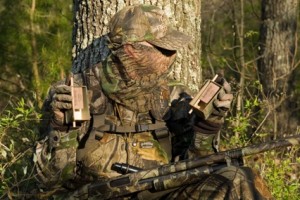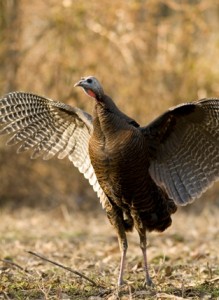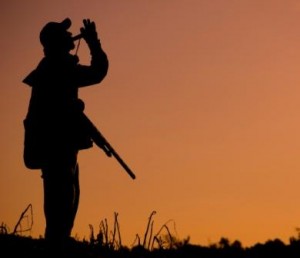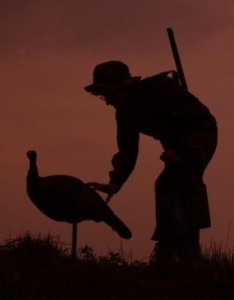Into the Woods for the First Time
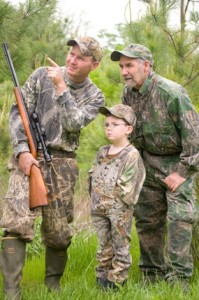 What do you say to your youngster as they peer deep into your eyes while you are preparing for your hunt and ask, “When can I go with you?”
What do you say to your youngster as they peer deep into your eyes while you are preparing for your hunt and ask, “When can I go with you?”
All hunters hope their child will someday want to join them and share the same passion we have for hunting. However, when the day arrives, whether they pose the question or we invite them, the thought can be overwhelming. As a parent, it is sometimes hard to determine just when we want to head out into the woods with our new little hunting buddy, and the game we should pursue. After all, we want to insure that their fist hunt leaves a pleasant memory etched into their mind, and they have so much fun they can hardly wait to get out again.
What is the Right Age?
Many have argued over what age a child should be taken out for their first hunt. Some think 10 to 12 years old is a good start, while others have had their children in the woods as young as age 5 (such as my husband John and his son John III). No two children are alike and they mature at different ages. It is my belief that the parent will know when the time is right. Some children who consistently watch a parent head to the great outdoors want to begin at a very early age and see what hunting is all about. Then there are other kids that show little interest in hunting until a much later age, as late as their teen years!
What Game to Hunt?
 For those of us who hunt several types of game, it can be confusing trying to decide which animal to pursue with our new hunter alongside. It has always been my belief that you should start your child, hunting the game you hunt best.
For those of us who hunt several types of game, it can be confusing trying to decide which animal to pursue with our new hunter alongside. It has always been my belief that you should start your child, hunting the game you hunt best.
Squirrel hunting teaches woodsmanship and patience. A child will enjoy hearing the squirrel cutting nuts and have fun stalking the animal, and will learn their environment, such as various types of trees that squirrels frequently visit.
It’s a challenge hunting turkey since their eyes are located on the side of their head, which allows them to see nearly all around them. Adding to that, they see in color, and they fear that everything out there wants to eat them. That said, you may wonder, why in the world would someone start the novice turkey hunting? Because most spring turkey seasons take place when weather is cooperative, this is ideal for a beginner. And, there is something very special about arriving before first light and hearing a gobbler break the silence announcing a new day when the sun is barely in view of the horizon.
For those taking their child deer hunting for the first time, remember that they will have the most fun when they see a big game animal. Does and fawns will keep your child excited, just as a big buck excites the veteran hunter. Any deer is a trophy for a youngster!
Then there is the special youth hunt. Many states offer youth hunts for deer and turkey prior to the opening of the regular season. This provides a great opportunity for any youngster before the hunting pressure begins. Check with your local DNR to determine when they offer these special seasons.
Using Ground Blinds
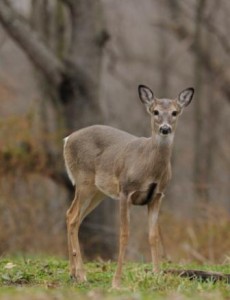 Many adults prefer to use a ground blind when taking their young hunter into the field. Large ground blinds offer enough room for two people, and provide concealment while waiting for something to happen. A kid can drink soda and munch on snacks without disturbing game. Additionally, it keeps them comfortable in inclement weather. Perhaps the best news is that a ground blind allows a youngster to shoulder a gun or draw a bow undetected.
Many adults prefer to use a ground blind when taking their young hunter into the field. Large ground blinds offer enough room for two people, and provide concealment while waiting for something to happen. A kid can drink soda and munch on snacks without disturbing game. Additionally, it keeps them comfortable in inclement weather. Perhaps the best news is that a ground blind allows a youngster to shoulder a gun or draw a bow undetected.
One drawback to blind hunting is the “stationary” factor. Once inside the blind, you’re stuck. Since a child’s attention span is short and you cannot make something happen, they could become bored. I would suggest you do your part before setting up a ground blind, selecting an area where the child is likely to see game.
Although ground blinds are a great tactic for kids to begin hunting, it will not teach them woodsmanship skills. Eventually, you should introduce the youngster to a walk, or an ambush site in the woods without the aid of a ground blind. The hands-on experience is superior, teaching hunting skills and not just shooting skills.
Making it Enjoyable
Since you want this hunt to be pleasurable for your child, other important factors need to be considered, such as weather, and a child’s attention span. Plan the adventure for a day when the weather is pleasant. No one likes to be out when it is cold, windy or rainy. If the weather is not going to cooperate, it’s best to reschedule for a better day. It is vital that a hunter’s first day in the field be comfortable.
When planning your child’s first hunt, keep in mind their short attention span. For instance, if squirrel hunting is the choice, a child can move around in the woods with you as you locate and set up on a feeding bushytail. This will certainly prevent boredom, and make sure the child will experience action.
Hunting Ethics and Education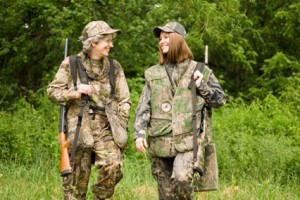
Opening day is not the time to begin your child’s instruction. Whether hunting with a bow or a gun, shot placement must be taught before heading out with a weapon.
If your intent is to have your youngster start deer hunting with a bow, equip them with a low-poundage bow they can draw comfortably. Poundage can be increased as the child progresses. I would also suggest you get them out well in advance to practice shooting skills. It’s helpful as well to use a deer target that has the vitals illustrated. This will teach them deer anatomy and shot placement.
Effective shooting range is another important aspect. Whether you stalk squirrels, hunt turkey or pursue deer, it is important to teach how to judge yardage accurately and shoot only when the quarry is in their effective shooting range.
One important factor to keep in mind is that no matter what game you hunt, ethics should be top priority. The youngsters of today will insure that our sport will remain indefinitely. Teaching right from wrong rests squarely on our shoulders.
Age Appropriate Equipment
Our little hunting buddy will want to look just like we do. You could have them wear drab clothes, but more than likely they will want to be decked out in camouflage. And, it will make them feel more like they are on an actual hunt. Fortunately, many of today’s manufacturers provide an array of youth sizes, from hats to hunting boots.
Footwear is of the utmost importance. An unprotected foot can turn any hunt into a miserable experience. Whether the boots are rubber or leather, they should fit properly and comfortably to avoid painful blisters, provide warmth, and keep the feet dry.
Choosing Their First Gun
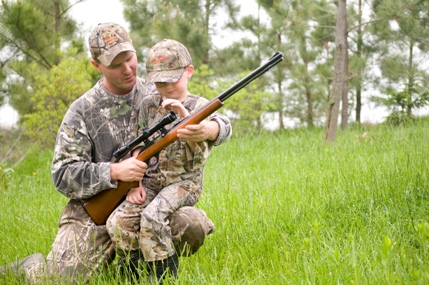 I think a single-shot .22 caliber rifle is the perfect gun for the beginning shooter, because only one bullet is fired. Using the one-shot gun will help them to bear down and concentrate on aiming. A child should be taught that it is always the first shot that counts.
I think a single-shot .22 caliber rifle is the perfect gun for the beginning shooter, because only one bullet is fired. Using the one-shot gun will help them to bear down and concentrate on aiming. A child should be taught that it is always the first shot that counts.
The 20 gauge or .410 gauge shotgun combined with a light load is far more comfortable for a child to shoot than a heavy-gauge. It will not kick as hard, and is capable of providing a successful hunt. It’s true that a small-gauge shotgun might not have the range capability of others, but it won’t create an unpleasant memory. A weapon that creates a bad memory is enough to make them gun shy.
Most important is to teach your child gun safety. Instruction is essential along with a hands-on experience. But there’s more to the story. They should be taught that the gun is not dangerous and it is the hunter’s responsibility to keep it safe.
It’s wonderful to see new hunters in the field practicing the sound ethics they were taught. We also get a thrill and sense of pride when they tag that first animal, even though that is not top priority. Knowing they are watching nature at its finest provides the serenity every soul requires, and generates a tighter bond between parent and child.
What are your thoughts on a child’s first hunt?
Let us know, we’d love to hear from you!
12,743 total views, 2 views today




